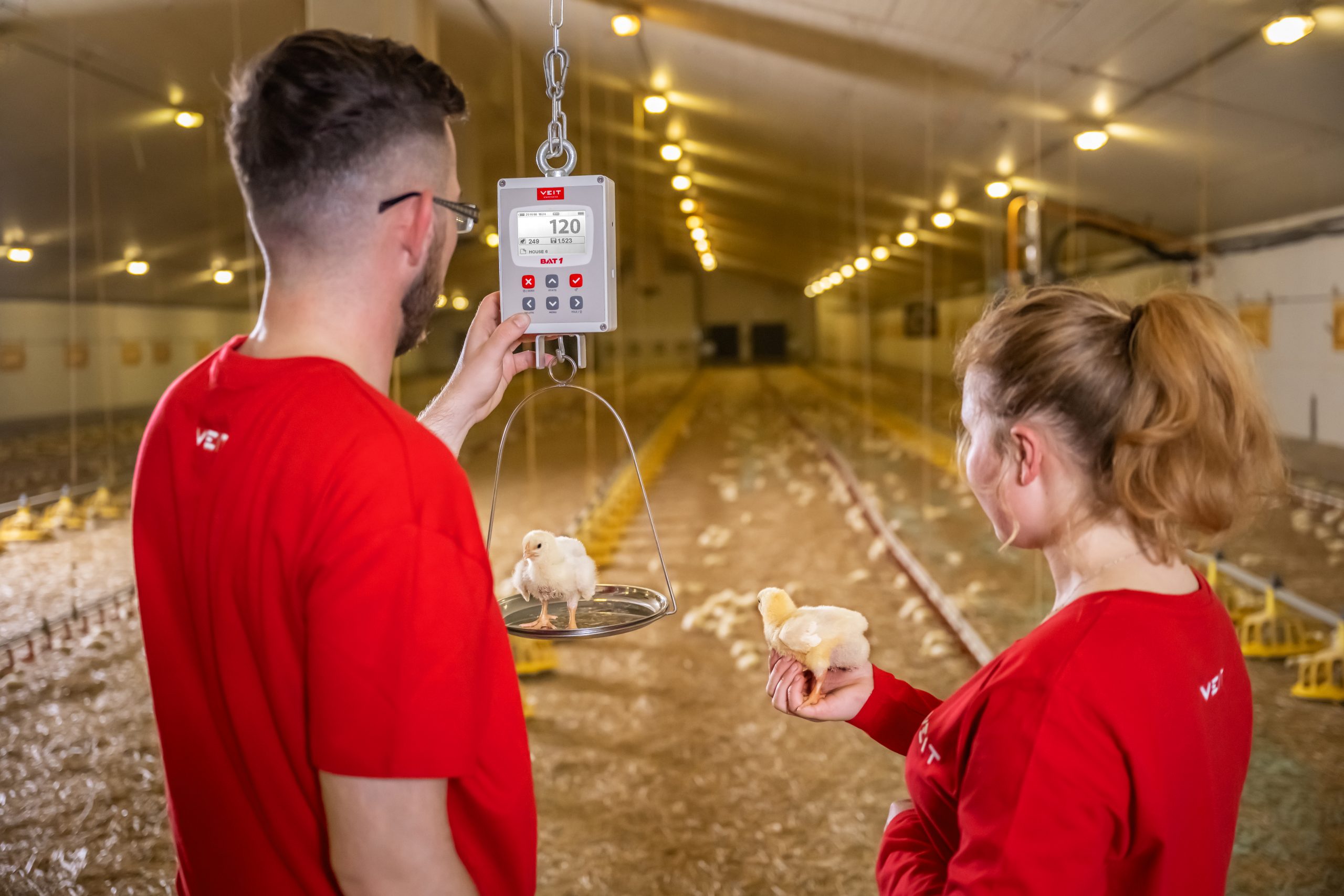Poultry farming throughout the world is remarkably diverse, as are weighing practices and the specific requirements of individual farmers. That said, all weighing methods fall into one of two categories (manual and automatic) and three general types of equipment are used to weigh all types of poultry.

Weighing methods
Manual poultry weighing involves direct contact with the birds being weighed. This method also provides insights into the general physical state of the birds. Such weighing is usually done at predetermined intervals and on designated random samples of a flock.
Automatic weighing denotes continuous, uninterrupted operator-less weighing throughout the poultry rearing period.
Scales equipped with remote data transmission and those that integrate with poultry management systems allow farmers to monitor flock development online. Both weighing methods use equipment that can vary greatly in quality, accuracy, and the reliability of collected data.
Types of weighing equipment
Some types of analogue and digital scales are not suitable for poultry at all, usually due to limited accuracy and/or inefficient design.
Specialised manual poultry scales are widely regarded as the best choice for manual weighing, thanks to their accuracy, ease of use, streamlined data transfer, and the actionable statistics they provide. In addition, such scales are designed specifically for use in poultry houses, where they greatly reduce human error and help farmers make reliable management decisions.
A typical example of such a specialised scale is the BAT1 poultry cale, which is trusted by farmers around the world.
As for automatic scales, the most typical use case is to mount sensor(s) in the poultry house and install the scale itself in a more centralised area, such as the hatchery office or an equipment room. Just like with manual scales, quality and results vary greatly between brands.
In contrast to manual scales, remote data transmission and direct integration into poultry management systems are vital for automatic weighing. One such automatic scale is the award-winning BAT2, which offers a variety of wireless transmission methods and is thus suitable for use anywhere in the world. Aviagen, Cobb, and other industry leaders detail their weighing processes in their Breeders Guides. The generally recommended practice for optimum yield is a precise procedure using a combination of manual and automatic scales.
Weight data crucial for managing all breeding types
Weight data is a vital component of effective poultry farm management. It gives an overview of the actual condition of the flock, provides reliable, actionable data, and serves as an early warning system for issues that can threaten farm efficiency. This allows farmers to better protect their flocks and profit margins alike.
However, these benefits are entirely dependent on the reliability of the weight data used. This is where equipment that minimises human error and prevents falsified data outperforms less specialised products. When monitoring a flock of layers, for instance, the primary performance indicator is the size of the total lay of each laying hen.
Here a few units of eggs can mean the difference between profit and loss and laying performance is strongly influenced by how properly the laying hen is able to develop. Accurate weight data helps ensure that proper development.
Broiler fattening is another place where accurate weight data can protect profit margins. An up-to-date overview of uniformity and adherence to hatchery-recommended growth curves make it easier for farmers to reach slaughter weight on schedule and avoid penalties and deductions at buy-out.
The effect of specialised weighing systems
When discussing threats to the profitability of a poultry operation, there is one topic that often goes overlooked or unaddressed – ‘cheating’. In practice, cheating occurs when operators intentionally fill out weight tables with false information in order to expedite the weighing process.
Equipment that involves manual data entry is most susceptible to such falsification, as well as mistakes due to human error during transcription to other systems. In addition to reducing required manpower and providing precise data, specialised products like the BAT1 manual scale or the BAT2 automatic scale from VEIT Electronics also protect against cheating, to ensure all collected data is reliable.
The importance of investing in quality weighing systems
When deciding on how to equip a new poultry house, best practices suggest that specialised scales are just as important as other crucial equipment, such as air conditioning, heating, cages, feeders, water supply, and so on.
fter all, accurate, dependable weight data allows farmers to maximise the value of all the other equipment they’ve invested in. Considering that these specialised scales account for only a small fraction of the overall equipment budget, it becomes obvious why poultry leaders all over the world rely on them to manage their operations effectively and increase profit margins.
Use this link: https://poultryscales.com/waystoweigh to access a video for a basic overview of viable weighing equipment.
